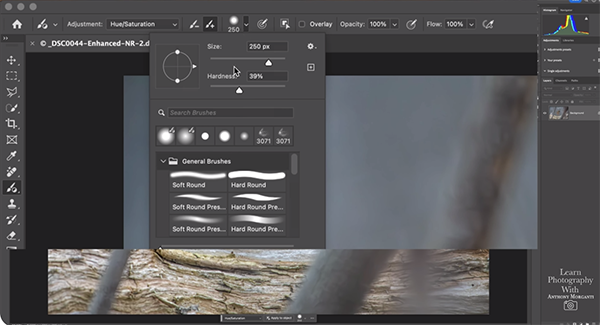Exclusive Pro Breeze discount – how to score an extra 10% off everything you need to keep cool this summer
Enjoy special savings on bladeless fans, air coolers, air conditioners and dehumidifiers from the air treatment specialists
 REAL ESTATE
REAL ESTATE
 REAL ESTATE
REAL ESTATE
 REAL ESTATE
REAL ESTATE
 REAL ESTATE
REAL ESTATE
 REAL ESTATE
REAL ESTATE
 EVENT
EVENT
 LANDSCAPE
LANDSCAPE
 LANDSCAPE
LANDSCAPE
 CONCERT
CONCERT
 LANDSCAPE
LANDSCAPE
 TRAVEL
TRAVEL

REAL ESTATE
Residential, Commercial, Interiors

LANDSCAPE
Landmarks, Cityscape, Urban, Architectural

FOOD
Hotels, Restaurants, Advertising, Editorial

PORTRAIT
Traditional, Glamour, Lifestyle, Candid

PRODUCT
Studio, Lifestyle, Grouping

EVENT
Conference, Exhibition, Corporate

FASHION
Portrait, Catalog, Editorial, Street

TRAVEL
Landscape, Cityscape, Documentary

SPORT
Basketball, Football, Golf

CONCERT

STILL

STREET
Now that the powerful Adjustment Brush tool is out of beta and officially a part of the current version of Photoshop, it’s time to learn exactly how it works. And there’s nobody better to bring us up to speed than instructor Anthony Morganti.
Morganti is a post-processing expert, adept photographer, and professional photo retoucher based in Buffalo, NY. We often rely upon him to explain new image-editing features and techniques, and he does that today in less than 10 minutes. After watching him demonstrate Photoshop’s Adjustment Brush tool be sure to download his free printable keyboard shortcuts PDFs using the link in the description beneath the video
Depending upon how you’ve set up your workspace you may not see this new tool nested within your brushes panel. But don’t worry because Morganti explains how to make the Adjustment Brush appear exactly where you want it. Then you can click on the Adjustment tab atop the screen to reveal a dropdown menu that displays all the enhancements you can make using the new tool—one example being Hue/Saturation.

With some options you have a choice of adding or removing an adjustment, and there’s a handy window with various settings like brush size, hardness, opacity and flow. You can also choose from a number of pre-defined brushes. Morganti also reveals several timesaving keyboard shortcuts to facilitate the process.
Morganti then pulls up his image of a small bird perched atop a branch and demonstrates how easy it is to boost saturation of his subject with the new Adjustment brush tool. Photoshop adds a Hue/Saturation layer with a black mask once he selects a brush, and here’s how this mask works: Photoshop won’t add adjustments to areas that are black, enabling you to quickly paint in whatever effect you want to create without affecting other areas within the frame.
Other adjustments work much the same, and Morganti’s next example involves adding contrast to the bird. Simply click on the Brightness/Contrast option in the dropdown menu mentioned above and use whatever Brush style you want to paint in this enhancement—leaving the rest of the image untouched.

The lesson includes many more examples with different tools, and a few tips and tricks, so you’ll understand everything that Photoshop’s new Adjustment Brush tool can accomplish with speed and precision. Then, when you’re done watching, head over to Morganti’s instructional YouTube channel and peruse a wide variety of image-editing techniques.
And be sure to watch the earlier tutorial we featured with another post-processing expert who demonstrates a simple way to fix converging vertical lines that can spoil your landscape and cityscape photographs.
If you’re searching for an affordable short telephoto prime with impressive autofocus performance, excellent image quality, a fast maximum aperture, and other key attributes, this quick video review is for you. In fact, respected photographer Mark Weimels insists that “the Yongnuo 85mm f/1.8 is the sharpest budget lens ever made.”
According to Weimels, who posts weekly tutorial and gear reviews for budget-conscious photographs, Yongnuo is a company that’s great at making lenses but terrible at marketing them. Thus, you may be unfamiliar with the brand but it’s time you got up to speed.
Weimels notes that his claim isn’t based solely on personal experience, because “this lens has been objectively tested by the respected DXO website that found the Yongnuo 85mm prime to be the second-sharpest lens they ever tested—sitting above a premium lens that costs over $13,000!

In other word, the performance and optical quality you’ll get for well under $400 are simply unmatched. This remarkable lens is available in mounts for Nikon Z, Sony E, and Canon RF although the latter can be difficult to find.
So what are the big compromises you have to make when grabbing this deal? According to Weimels there are none. After putting the Yongnuo 85mm f/1.8 through its paces in a variety of situations this is Weimels’ conclusion: Everything from the build quality and handling to all the optical testing I’ve done indicates that it performs perfectly, near-perfectly, or well above average,” and the sharpness is superb—despite the remarkably low price.
This is a full-frame lens that works equally well with APS-C cameras. It’s constructed with nine elements in eight groups and uses affordable 58mm filters. The lens is equipped with an AF/MF mode switch, seven circular aperture blades for nice bokeh, and boasts nano-multi-layer coating for increased light transmission and minimal flare/ghosting.

This surprising lens also supports USB-C firmware upgrades so you can download the latest version to keep the 85mm f/1.8 performing at its best. Weimels says he loves this lens for portraiture, but he also sings it’s praises for shooting on the streets as well as product, wedding and event photography. Just look at the examples he provides, and you’ll be very impressed.
There’s much more to see and learn on Weimels’ popular YouTube channel, especially if you’re looking for more amazing bargains.
And speaking of lenses, don’t miss the tutorial we featured recently with an accomplish pro who demonstrates why and how the aperture setting on a lens has a significant impact on the appearance of every photograph you shoot.
